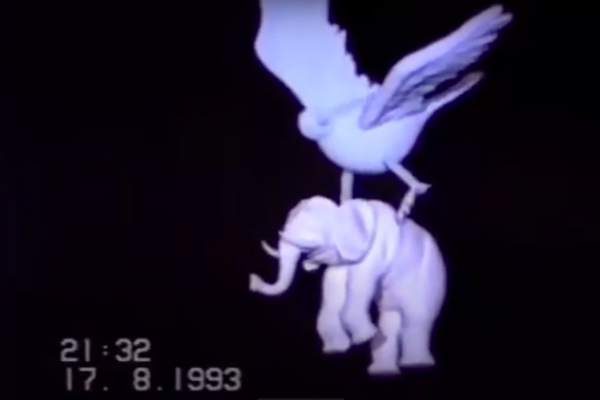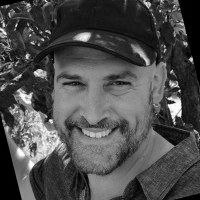One of the miniature chapters composing Oz’s Shelach’s crypto biographical novella Picnic Grounds recalls a time when the area of the Russian Compound that lies tucked away behind West Jerusalem’s present-day municipality on Jaffa Street was mainly known among Israelis for its bars and nightclubs. The story concerns one such bar where muted cries can be heard “travelling from the interrogation rooms deep under the police station” that lies next door. The manager complains first by letter and then in person, but the unnerving disturbances continue, “tainting the drinking pleasure” of the bar’s revellers. The manager can drown out the sounds by playing the music more loudly and loses some of his hearing with time. Since the mid-1990s, when I first started visiting Palestine, the bars and clubs have been shut down and replaced by new housing development, but the low-slung, walled complex to which the story refers, built in 1830 to accommodate Russian Orthodox pilgrims to the Holy Land, still extends from the heart of the old nightlife district to the landmark Eastern Orthodox, festooned with barbed wire and communications antennae. On most days of the year, clusters of men and women waiting for the release of a father or brother can be seen sheltering across from its narrow gatehouse in the shade of the church’s half-dome turrets as jeeps and prisoner transports pass before them. For over half a century, it has been the main Israeli centre for the detainment and interrogating of Palestinian political prisoners from the Occupied Territories. Today estimated to a number over 800,000, composing one-third of all adult men in the West Bank and Gaza Strip, know it simply as Al Moscobiya.
In 1996 a young man named Walid was interned in the Moscobiya and put to work washing police cars in the compound. It is two years after the signing of the Oslo Accord. Palestinians are increasingly confined by new travel permit regimes and checkpoints to self-rule enclaves established by the Accords. One day Walid discovers a backroom hatch of some kind – the story is vague on this point, deliberately so one suspects, which could allow entrance into the compound. He called his brother-in-law, who was working in a restaurant not far away from the compound, named Ahmed. A sometimes car thief and street activist, Ahmed has been held multiple times in the Moscobiya. “I did not think about what to do,” he recalls, “it was spontaneous.” That weekend he slips into the compound, puts on a police shirt and a cap, takes a set of car keys from an administrative back office, and drives a police cruiser up to the exit gate. He has no ID, and the cap, which is too big, keeps falling over his eyes. Finally, however, the interlocking doors slide open, and as Ahmed pulls out of the Moscobiya in his police car, the guard salutes him.
“I felt like a king, zay malik!” he enthuses. I was a policeman, and no one could stop me! I wanted to go everywhere!”
For a few hours, Ahmed does, taking his new self on a tour of Jerusalem. Passing a restaurant where two relatives work illegally, he hails them on his megaphone. “Mahmoud, Mahmoud, you are wanted! Give yourself up!” “They bolted out the door,” he recalls, laughing. “They did not know it was me.” Seeing an Israeli woman hastily clamp on her seatbelt as he pulls up next to her at a traffic light, he wags his finger at her. On his out of Jerusalem, he speeds through one checkpoint, then another. Arriving at the entrance to his village, he is surprised when the Shebab comes out to stone him, having forgotten whom he has become.
Moreover, he is not done yet. The next day he places some calls to Jerusalem and realises that no one has yet noticed that the car has been stolen. So that afternoon, Ahmed returns to Jerusalem and steals another police car from the Moscobiya.
When the thefts are finally discovered two days later, the Israeli government launches a large-scale manhunt. Helicopters scour the hills of the West Bank, and the Palestinian security services are instructed to find the perpetrator. Relations between the newly established Palestinian Authority and Israel are at a low ebb. They will later that year deteriorate into open gunfights between Palestinian forces and the Israeli army. However, the PA reluctantly complies when someone recalls seeing an Israeli police car entering a village in Hebron. Two weeks after the break-in, Ahmed receives a call from the head of Palestinian Preventive Security. “Ahmed, you do not know what kind of trouble you have caused for us,” he is told. The PA convinces Ahmed to give himself up on the condition that he not be handed over to the Israelis. However, Israeli intelligence is allowed to interview him while in Palestinian custody in Jericho. “Three officers from the Moscobiya came in, and we talked,” relates Ahmed.
They wanted to know who helped you,’ and ‘why did you do it?’ Was I connected to Hamas? First, I told them that it was not planned. Then I told them I did it to show them that even if they put up 100 checkpoints, you cannot stop me from going to Al Quds!”
The Palestinian Authority kept Ahmed in custody for three months before releasing him on his recognisance He went into hiding and managed to avoid capture for over a year, using a forged ID to move around. He was finally caught in 1998 and, at the end of 1999, sentenced to three years in prison for motor vehicle theft. “The police were so embarrassed by the story,” he says. “My lawyer told them that he would take it public if they charged me with a political crime. However, do you think if I just wanted to steal a car, I would have done it from the Moscobiya?”
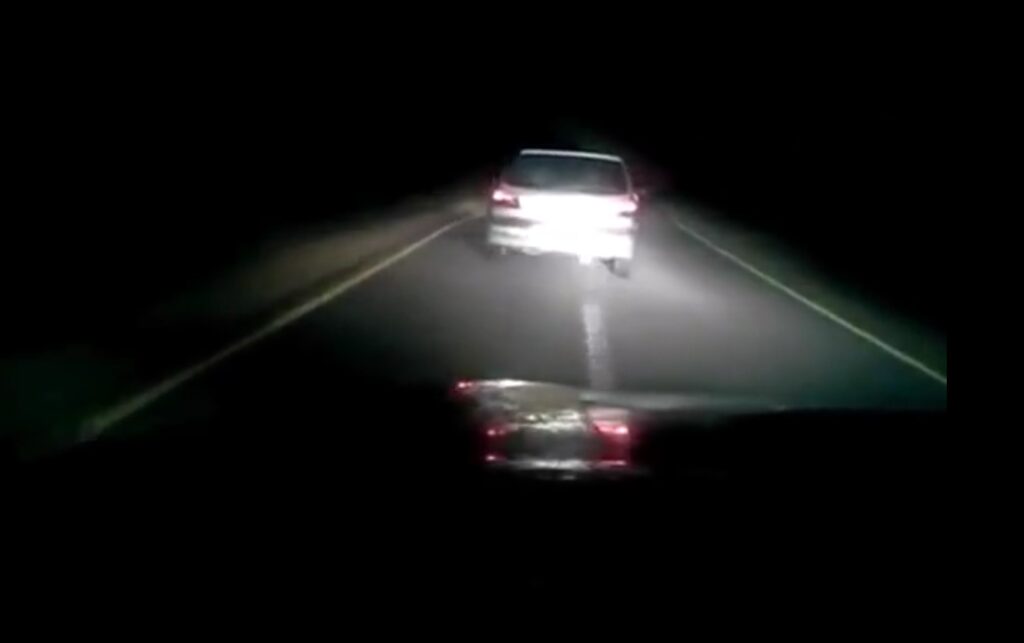
Ahmed first told me his story in 2007. I lived in Palestine for some years, writing essays for newspapers and magazines. In the wake of the second Intifada, which had by then exhausted itself, Israel had erected 700 kilometres of concrete wall and barbed wire across the West Bank, as part of its self-styled Separation Barrier, consolidating the policy of confinement and segregation inaugurated a decade earlier. Expressing what has since become a commonly held understanding, Yael Berda calls Israel’s occupation “[a] laboratory for policies and technologies restricting mobility, particularly to police social inequalities.” Though critical of the occupation, such accounts also interpolate Palestinians as little more than experimental subjects – literal lab rats. So I wanted to investigate other aspects of how Palestinians get around and make it through. “You have to talk to my cousin,” said a friend. “He is a gangster and has a story to tell.”
It is a story that has kept a particular hold on me becase the improbable flight of which it speaks enacts an escape not only from the colonial laboratory, but thereby also categorisation as such. For Israel, it forced the question of whether it was a criminal act or an act of politics, e.g. did it break the law or challenge the authority of the law? The vexation arises in part, we intuit, from the performativity of the act, which plays across multiple registers. In one sense, the act was quite plainly a joke or prank, which embarrassed the colonial state. However, it was also a literal act. Ahmed did it by acting out another self and then reenacting that self by stealing a second police car from the Moscobiya, and playing the role of himself. Indeed, a curious sidenote in his denouement of his story is that while in prison, Ahmed studied for and obtained a diploma in acting. He also took the chance to act in an Israeli TV series partly filmed on location in Ramle prison, called Zinzana, in Hebrew Simchat Asirim (1999-2005). Tellingly, this feels like the least plausible part of Ahmed’s story while also being the least impossible one. In the classic Aristotelian understanding, reality need not be plausible in the manner of fiction, but unlike fiction, it must be possible. Moreover, Ahmed’s story would trouble the line between fact and fiction, not only for the Israeli state.
In 2011, I started a PhD in anthropology in New York, and upon returning from Palestine some years later, they told my PhD advisor Ahmed’s story. After suppressing a brief, perplexed smile, she asked skeptically, “how do you know it is true?” In a strict sense, I did not. As indicated, there were prominent gaps in the story, and even as Ahmed later filled some in and relatives of his, new inconsistencies also appeared in such retellings. Though I would not have been surprised if my advisor did not believe the story, I was surprised by the fact that she expressed her disbelief. While accounts of outright magic have long been staple topics of anthropological research, anthropologists have customarily, and for practical purposes, bracketed the ‘truth’ of these accounts. In E.E Evans-Pritchard’s classic work on witchcraft, for example, the British anthropologist affirms that witchcraft cannot be accurate while nevertheless presenting it as a logical and coherent practice on its terms. In their desire to be seen to take seriously – as is the common phrase – the cosmologies of their interlocutors, contemporary anthropologists are unlikely to offer up stark disavowals in the manner of Evans-Pritchard. However, how they bracket the question of the impossible is not dissimilar in its effect. Had I told my advisor that I had seen an exorcism of djinn, they would not have asked if I knew it to have happened. Not because they believed in djinn, but because she did not need to decide what she believed, as long as the djinn inhabited another reality, separable from her own. This constitutes a kind of magic in its own right, the magic of modernity. Indeed, in the classic anthropological account of Marcel Mauss and Henri Humpert, what makes magic magical is that it sidesteps the very need for belief, as such.
In anthropological parlance, the name for the magical other reality of other peoples is “The Field.” As a concept, it communes with a broader, modern imaginary, elucidated by Benedict Anderson’s classic work Imagined Communities, whichamong self-professed moderns gives rise to a feeling that they share with people whom they have never met a mystical substance called identity, ferried by terms such a culture, or race, by virtue of inhabiting a place and time that would be only their own; the territory of a people, and the history of which this person are the protagonist. These moderns can also feel that people with whom they otherwise live in close proximity, such as the natives of the colony, inhabit another world entirely by virtue of their race or culture. These fantasies would be two sides of the same coin, figments of the “armour-plated” imaginary of modernity and the colonial world of “compartments,” described by Fanon in The Wretched of the Earth, with which the struggle for decolonisation is constitutively in conflict.
This conflict is expressed in a feeling among those who struggle that “[c]olonized peoples are not alone,” that “[d]espite the efforts of colonialism, their frontiers remain permeable to news and rumours….” Thus “the great victory of the Vietnamese people at Dien Bien Phu is no longer strictly speaking a Vietnamese victory.” (169). Still, it becomes a lighting rod for all colonised peoples, showing that something that was hitherto thought undoable can be done. Indeed, as Fanon underscores, decolonisation must be understood first and foremost as a struggle against impossibility. However, as we might also understand from him, this struggle remains winnable won not in so far as the colonised are able to cling unto hope – as would be the liberal conception of political struggle – but in so far as they struggle without hope. In other words, in so far as they struggle against reality as such.
I would propose this is the feat of Ahmed’s story, which refuses the world of compartments, not because it affirms that many realities are one reality but because it denies the notion of reality as such. Instead, it enacts something akin to what Donna Haraway terms a worlding, a way of being as becoming that is open in the strong sense of the word, capable of continuously disclosing itself, but can do so not using historical narrative, but by means fabulation, not unlike A Thousand and One Nights. It proposes that the problem with the conception of Palestine as a laboratory is not that it overextends a metaphor, but does not take seriously enough the understanding that it is the work of laboratories to manufacture reality (see Latour, Shapin).
Moreover, Ahmed’s is not the only fable out there.
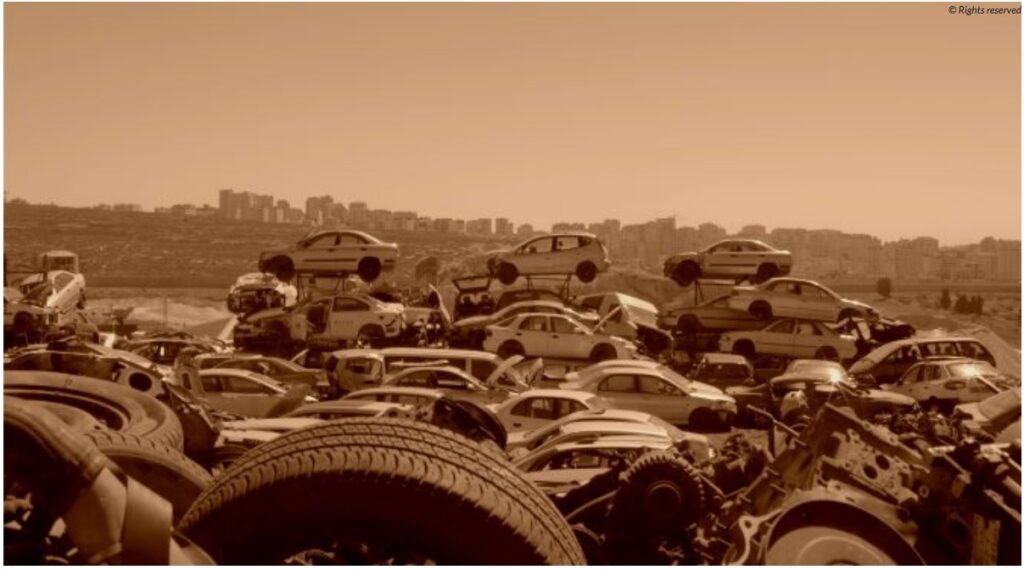
The same year I was first told of the Moscobiya break-in, my car broke down on a remote dirt road across the Green Line from Hebron, running parallel to the Israel’s Wall. Shortly thereafter, an army jeep appeared on the patrol road along the Wall’s fencing. The soldiers walked over and asked what we were doing there. After checking our passports, they put me on the phone with a female officer. She said they could take us to the nearest town, but wanted to know if I was OK leaving the car there.”Why,” I asked?” “They could come and steal it,” she said. “Were they,?” I wondered, Looking out across the fence and barbed wire as it extended into the horizon. I could see only a thin spread of houses several kilometres of rolling hills away, However, saw no road connecting there to here. The car itself had never seemed less likely to budge or be worth anyone’s effort to move. What remained could not have been worth more than a few hundred dollars. I had a fleeting thought that something like teleportation would be required. “Moreover, it is behind your fence,” I reminded her.
“Oh, you do not know what they are capable of,” she said.
The story behind the soldier’s suspension of disbelief is also the story of the criminal world from which Ahmed emerged. Fifteen years before this encounter, auto theft in Israel began to increase dramatically, made possible by growing private car ownership in the early 1990s but also by the signing of the Oslo Accords, which, in the account of criminologists (Herzog) as well as anthropologists (Parizot) allowed for car thieves to escape the Israeli police by driving their contraband into Palestinian self-rule enclaves, where they were cut up for parts and sold back to garages in Israel. Between 1993 and 1997, the number of vehicles stolen in Israel doubled, from 23,000 to 46,000 (Herzog 2002), and by 1997, Israel officially suffered the world’s highest motor vehicle theft rate. In 2006, The Jerusalem Post reported that the Israeli police had intercepted shipments of stolen car parts en route to Jordan and Iraq. Auto theft, it seemed, knew no bounds.
In the ensuing decades, stories of particularly audacious acts of auto theft sometimes appeared in Israeli papers. Thus, in the March 31, 1997 issue of the Hebrew language daily Yediot Aharonot is an article headlined “They Stole Police Cars from Detainment Center: Two youths from East Jerusalem are accused of stealing two police cars under the nose of the policemen in the Russian Compound.” From it, The Associated Press Wire culled an article published on the same day titled “Car thieves steal patrol cars from the police station.” However, the Yediot article is terse, no more than a paragraph long, hidden out of view and printed in the bottom corner of one of the paper’s back pages. The AP Wire article is shorter and cavorts in the story’s humour, but it accordingly also underscores that it is a literal joke, a story that does not matter; if it has a genre, it is that of the tabloid.
That auto theft is not taken seriously enough is a perennial complaint of insurance industry associations and criminologists. One reason is that the authorities also understand that Israelis often let their cars be stolen to collect insurance money. For such reasons, auto theft has been called a “happy crime” in the criminological literature. As one garage owner explained, this is also the feeling among many Palestinians: “Israelis want their cars to be stolen to collect the insurance money. They are all working together. Bishtighlu ma’bad. They arrange to leave the car somewhere, and then the thief comes and takes it.” In so far as the car is not stolen but ‘stolen,’ auto theft becomes something akin to a theatrical act, in a literal sense. Indeed, for Palestinians of the older generation, auto theft is typically not talked about as acts of political heroism. Indeed, it is not understood to be a political act, as such, particularly by Palestinians of the older generation. On the contrary, being a form of criminality, it is actually frowned upon as haram.
In these and other respects, Palestinian auto thieves call to mind a peculiar figure whom James Siegel treated in his book A New Criminal Type in Jakarta. It is a criminal whocommits impossible crimes, scarcely believable in their audacity and depravity, and resists categorisation, e.g. the question of what their crimes are about. Paradoxically, they are, therefore, all at once meaningless and compelling. “Such criminals are sensational but not memorable, exciting without being important,” observes Siegel. “For the greater part of the time, kriminalitas seems to exist at the edge of memory.” (8). Stories of such criminals feature in the national tabloid Pos Kotas as engrossing curiosa or faits divers, composing a genre known in Melayu as kriminalitas. From this medium, they cannot be disassociated. As Siegel stresses, the criminals of kriminalitas are “a construction of journalism,” (49) who are what they are and do what they do both on the tabloid page and in ‘reality,’ and accordingly in neither.
Though rarely a laughing matter among older Palestinians, the figure of the auto thief has, found a place in the imaginaries of the younger generation of Palestinians who came of age after the Oslo Accords. On Youtube a genre of video clips can be found featuring footage from security cameras and police dashboard GoPros, in which Israeli police can be seen pursuing Palestinian auto thieves in a stolen Golf or BMW, losing their prey in the narrow streets of a poorly paved town in Israel’s self-styled “Arab Sector” or hills of the West Bank. In one such video, the police arrive at a cul de sac where the car stands empty. In another, they corner the car on a bridge, only for the thief to leap over the railings at the last moment, his face briefly flashing into view, almost within grasp, before disappearing. In yet another, a young man jumps into an Israeli police car, momentarily left unattended and speeding away. Though not per se triumphant, the videos are from a Palestinian sense funny, in the same sense as Ahmad’s Moscobiya heist. One tale shared by word of mouth among Palestinians tells of an auto thief who, to throw the police off his track, strapped the radio transmitter of the stolen car – known as the autorad – unto a donkey and set it to wander into the hills.
Auto theft accordingly inverts the metaphor of Palestinians as lab rats but with a difference. In auto theft, it is Palestinians who play with Israelis. However, this play does not constitute a recognition of what two opposable others are in their respective subject positions. As underscored by Fanon , this liberal concept of recognition is not possible between the colonised and the colonisers. What is instead enacted is a paradigmatic colonial fantasy, that “of taking the place of the colonist,” which is expressed in dreams of possession. “[O]f sitting at the colonist’s table and sleeping in his bed, preferably with his wife” (120). What the fantasy of auto theft adds to these dreams of possession is an understanding that in becoming someone else one is also becoming somewhere else.
To be a particular person is to move in a specific reality. This is not merely the guise of the other as a form of appearance, in other words, but a particular relationship to the law. For example, in my first meeting with Ahmed, I asked him how he felt wearing an Israeli police uniform. “I was not thinking about the uniform,” he replied, “I was thinking about the car. You know what it is like to be in a Palestinian car, always afraid of being stopped, looking out for the police. However, in this car, I felt like I could do anything!”
To inhabit this feeling, however, is to doubt the common aetiology of auto theft in Israel upon which government experts, criminologists, and anthropologists have all hitherto agreed. By their understanding, auto theft is to be understood in terms of the purview of the law, the impress of policing, and the lure of money. However, at the height of Israel’s auto theft pandemic, in 1997, one-third of all cars stolen were also recovered, most often because they had been abandoned. In 1992, this was the case for over half of all cars registered as stolen in Israel. This phenomenon is commonly observed in statistical studies of Motor Vehicle Theft, or MTV, and is explained by criminologists referencing the concept of Joyriding, A phenomenon which would not be about any one thing in particular, their attempts at further subcategorisation notwithstanding, would, in one sense, be a flight from aboutness. For Lacan, desire has no proper object “because it is the very process of constantly moving on from one object to the next” (Hewitson, 2010) whispering “ce n’est pas ca,” ‘Not this, not this.’ (Lacan)
Furthermore, though the rise in car thefts in Israel between 1993 and 1997 is dramatic, the trend did not begin in 1993 In the previous six years, between1986 and 1992, the number of stolen cars had already doubled, from 12,000 in 1986 to 21,000 in 1992, According to this chronology, the event that would explain the rapid growth of auto theft in Israel is not the Oslo Accords, but the eruption of the first Intifada in 1987. Indeed, many Palestinians who began stealing cars in the 1990s did so during the uprising, not for the money but to become someone and somewhere else, in a moment when everything felt possible. Also, in this respect, there is an echo in the criminals of kriminalita. As noted by Siegel, they are explicitly associated by the Indonesian state with the threat of revolution, enacting “the continuation of revolutionary activity after the time of revolution” (47). Hence they are also held to be singularly creative, whereas ordinary criminals have ‘modus’ (95); patterned predictable ways of working, the modus of the criminals of kriminalitas is that they are ‘innovators; (ibid) they do things unheard of.
Though the figure of the auto thief has hitherto remained marginal in research on Palestine, by and large confined to the marginalia of scholarly monographs, no less than the back pages of newspapers, auto thieves and the garage culture that they inhabit have come to figure prominently in the work of several younger Palestinian artists, such as Moayed Alayna’s 2015 film Love, Theft and Other Entanglements, and the short experimental film Blessed Blessed Oblivion (2010) by Jumana Manna, the most compelling treatment to date is the 2018 short film White Elephant, by Ramallahbased artist Shuruq Harb, in which the themes of desire, revolution, and becoming are interwoven to provocative effect.
Blesses, Blessed Oblivion (2010) directed by Jumana Manna
The thief of the story is Harb’s boyfriend Nasser, who once, when drunk and thus not entirely himself, confided in her that he sometimes stole cars. “He said it only takes 60 seconds to steal a car. However, driving back to Ramallah is the complicated part. He said he only stole from Israelis. As if that made it a noble cause.”These and other reminiscencescommune over 23 minutes with a range of found footage from TV and YouTube, intercut with video shot by Harb in and around Ramallah. There is a pan across a breaking yard on the outskirts of the city; a car being torn apart by a crane; a naked chassis awaiting its missing parts; a video from an Israeli police car of its nighttime pursuit of an auto thief. It is an evocation of a continuous process of diss-assemblage and re-assemblage. White Elephant is about far more than automobiles in this and other respects.
The film opens with TV footage of street clashes from the first Intifada, intercut with news reports from the first Gulf War. It conveys an experience inseparable from its medium, always already crypto-fictional, which shapes Harb’s first reminiscence of a boyfriend killed by Israeli soldiers. “I never told anyone that I knew Sami was going to throw the Molotov; I never believed him; I thought he was just kidding. I wish I could argue with him now.” Naturally, hers would be a tale of love and loss in a time of insurrection. However, it is a tale entirely lacking epic pretensions or sentimentality,partly partly because Harb still argues with Sami. “And I know you would not approve of this, but I am going out with Nasser now,” she adds. “Since you are dead, I no longer care what you think.” It is said defiantly, underscoring the feeling of an insurrection on every level. Intifada footage is intercut with footage from home videos of a teenage Harb posing in her father’s suit.- “I can also become someone else,” she muses; a TV interview with transsexual Israeli singer, Dana International, on the occasion of her winning the 1998 Eurovision song contest; and a mock music video, in which Harb’s sister plays Dana International in full kitsch mode, crooning “I love you a lot, a lot” in heavily Hebrew accented Egyptian Arabic.
Throughout the film, the feeling evoked is dreamy; the dream is to become someone else somewhere else. The White Elephant is an illuminated balloon that floats over a 72-hour trance concert in Tel Aviv, into which Harb and Nasser smuggled themselves by pretending to be Israelis. “I guess on the surface we were all escaping something; he wanted to forget he was a soldier, and we simply wanted to disappear,” she remarks of one. The film closes with a video taken from the dashboard of an Israeli police car in a nighttime pursuit of a stolen car that vanished into the hills of the West Bank, in which a pair of donkeys briefly flash into the glare of the police high beams, before they settle on a car abandoned at the end of the road, the thief long gone.
White Elephant (2018) directed by Shuruq Harb
By bringing Harb’s work into conversation with Pascal Menoret’s Joyriding in Riyadh (2014), we elucidate what is at stake, politically speaking, in her escapes. In his ethnography, Menoret follows young Saudi men who drift on the streets of Saudi Arabia’s capital and flirt with each other, throwing amorous poems into each other’s cars and instructions for pulling off complicated manoeuvres. Naturally, they would be identified as queer by a particular understanding, like Dana International. In their artfulness, however, they accordingly also render explicit what is entailed in the act of queering (as opposed to the assumption of querness as identity); it is to do that which cannot be done in a sense both natural and moral. It is thereby also to perform what Gilles Deleuze terms a kind of “double unhooking or ‘differentiation’ [de’crochage],” which results when “the ‘exercises that enabled one to govern oneself become detached both from power as a relation between forces, and from knowledge as a stratified form, or ‘code’ of virtue.” (100, 1988) [1] This is the project that Foucault has in mind when he argues that the aim of modern emancipatory projects should not be “to discover what we are, but to refuse what we are … to promote new forms of subjectivity through the refusal of this kind of individuality which has been imposed on us for several centuries” (216). For Foucault, this would require something akin to “[c]reating one’s self as a work of art” (1984, 351). But how could one refuse to be what one is? What kind of artfulness is this? The answer offered by Ahmed’s story is a literal one, refusing metaphoricity: one refuses to be by becoming, i.e. by going on a journey in which onebecomes someone else.
This is a notion intuitive in Ahmed’s colloquial Arabic. Palestinians say of the scurrying movement of mice and rats, laboratory and otherwise, that they bisrah ou bimrah, which can be loosely translated as “scuttling hither and dither.” Bimrah derives from the verb root m-r-r, meaning ‘he passed,’ from which the word for ‘count’ or iteration, marra, is also derived. Bisrah derives from the root s-r-h, which in its first derivation, Sarah means ‘he roamed freely,’ but also ‘he was distracted.’ In his reflections on the changing Palestinian conceptions of wandering, Raja Shehadeh explains that:
“[a] man going on a Sarah wanders aimlessly, not restricted by time and place, going where his spirit takes him to nourish his soul and rejuvenate himself. However, not any excursion would qualify as a Sarah. Going on a Sarah implies letting go. It is a drug-free high, Palestinian-style” (26).
Like a joyride, we might say, or a rave.
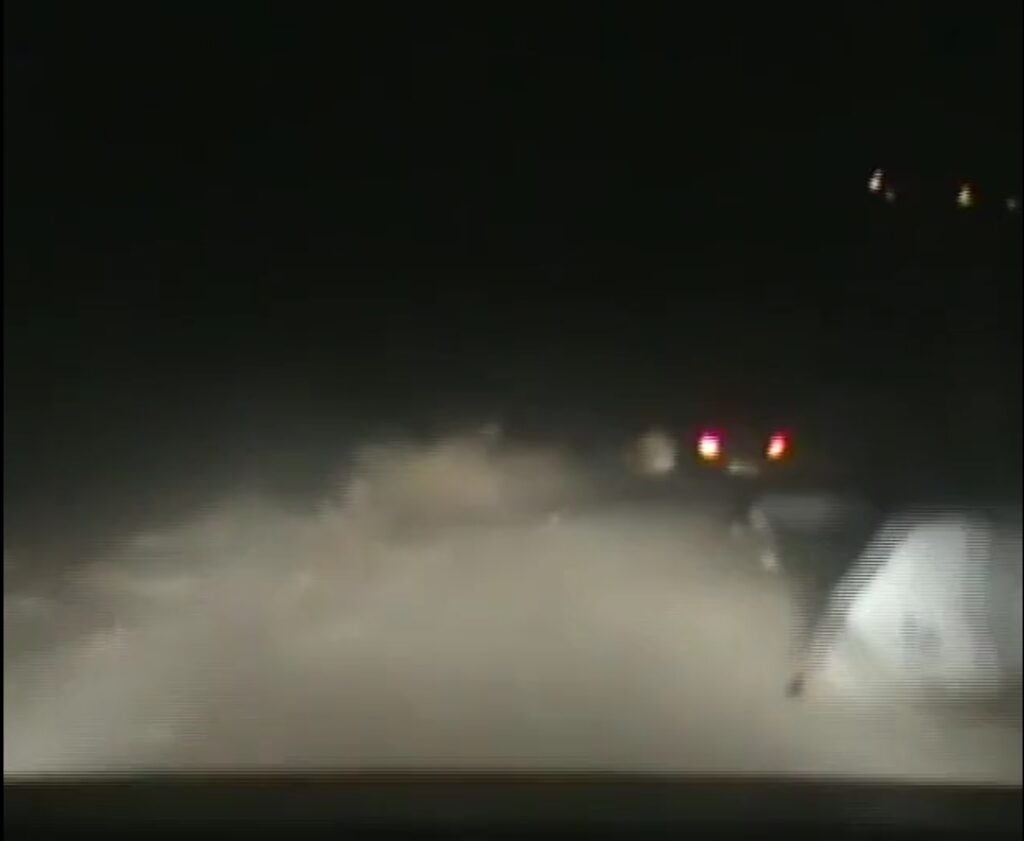
Exploring further derivations of s-r-h, we observe that tasrih, or permit, is what Palestinians have, since the 1990s, been required to apply for in order to travel, yet its connotation is relational, that of taking leave from someone; thus, Sarah can connote a dismissal or divorce, such as Harb’s parting of ways with her martyred boyfriend, and so also the playing of a different role by virtue of being in a differentrelationship; thus we arrive at Marah, meaning stage, scene, or theatre, and masrahiya, meaning play. From a way of moving them to the making of a new scene. Indeed, in disappearing into passages and portals hitherto hidden, the mice who Bisrah also force us to wonder about a hidden scene or reality beyond our own, like the white rabbit that Lewis Carroll’s Alice pursues into Wonderland. They reenchant a disenchanted world in which fewer and less things feel possible. Yet, theirs is not an epistemological practice in which knowledge is grasped, but a journey in which one lets oneself be grasped and thus also becomes other than who one is. It is an abductive experience. However, whom do we follow when we let ourselves be abducted, but the person we are about to become? Is every abduction not always an auto abduction, in this sense, always an Auto Theft?
References
Anderson, Benedict. Imagined Communities: Reflections on the Origin and Spread of Nationalism. London: Verso, 1991.
Berda, Yael. Living Emergency: Israel’s Permit Regime in the Occupied West Bank. Stanford, California: Stanford University Press, 2018.
Fanon, Frantz, Cornel West, Richard Philcox, Homi K. Bhabha, and Jean-Paul Sartre. The Wretched of the Earth. New York: Grove Press, 2021.
Foucault, Michel. ‘The Subject and Power’. Critical Inquiry 8, no. 4 (1982): 777–95.
Foucault, Michel, Paul Rabinow, Michel Foucault, and Michel Foucault. Ethics: Subjectivity and Truth. The Essential Works of Michel Foucault, 1954-1984, v. 1. New York: New Press, 1997.
Herzog, Sergio. ‘Empirical Analysis of Motor Vehicle Theft in Israel, 1990—97’. The British Journal of Criminology 42, no. 4 (2002): 709–28.
Kotef, Hagar. Movement and the Ordering of Freedom: On Liberal Governances of Mobility. Perverse Modernities. Durham : Duke University Press, 2015.
Massumi, Brian. Parables for the Virtual: Movement, Affect, Sensation. Durham, NC: Duke University Press, 2002.
Menoret, Pascal. Joyriding in Riyadh: Oil, Urbanism, and Road Revolt: New York: Cambridge UP, 2014.
Latour, Bruno Reassembling the Social: An Introduction to Actor-Network-Theory, Oxford: Oxford University Press, 2007.
Schaffer, Simon, and Steven Shapin. Leviathan and the Air-Pump: Hobbes, Boyle, and the Experimental Life: 109. Princeton, NJ: Princeton University Press, 2017.
Shehadeh, Raja. Palestinian Walks: Forays Into a Vanishing Landscape. New York: Schribner, 2008.
Siegel, James T. A New Criminal Type in Jakarta: Counter-Revolution Today. Durham, N.C: Duke University Press, 1998.
[1] For this reference, I am indebted to Nasser Abourahme.

